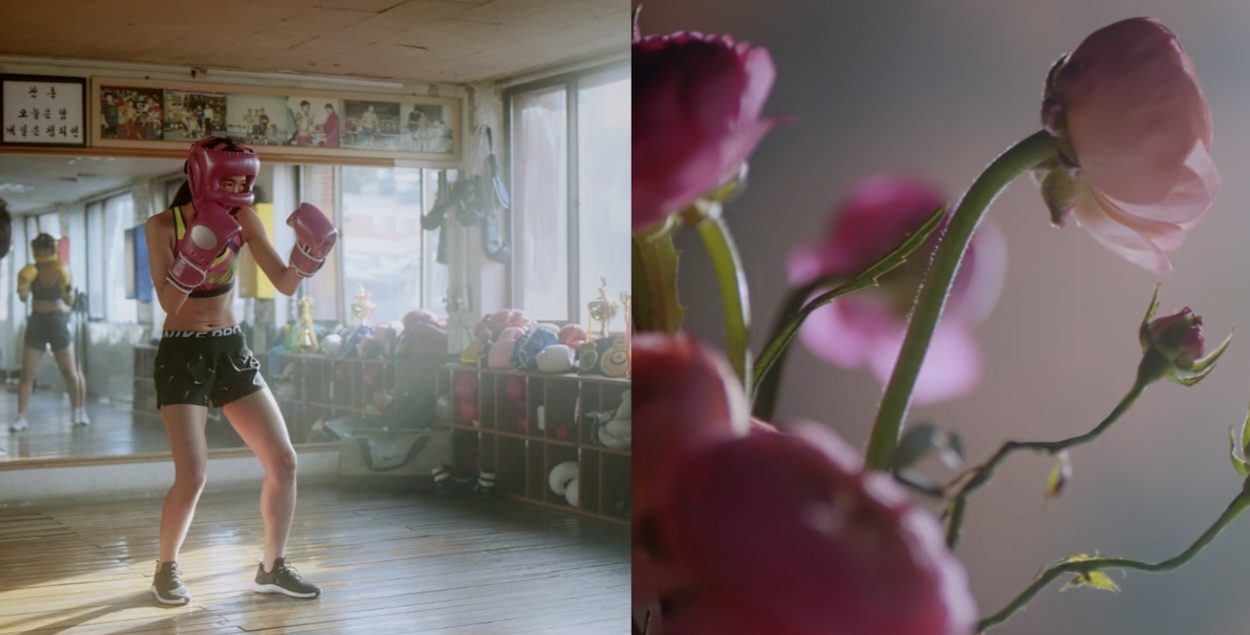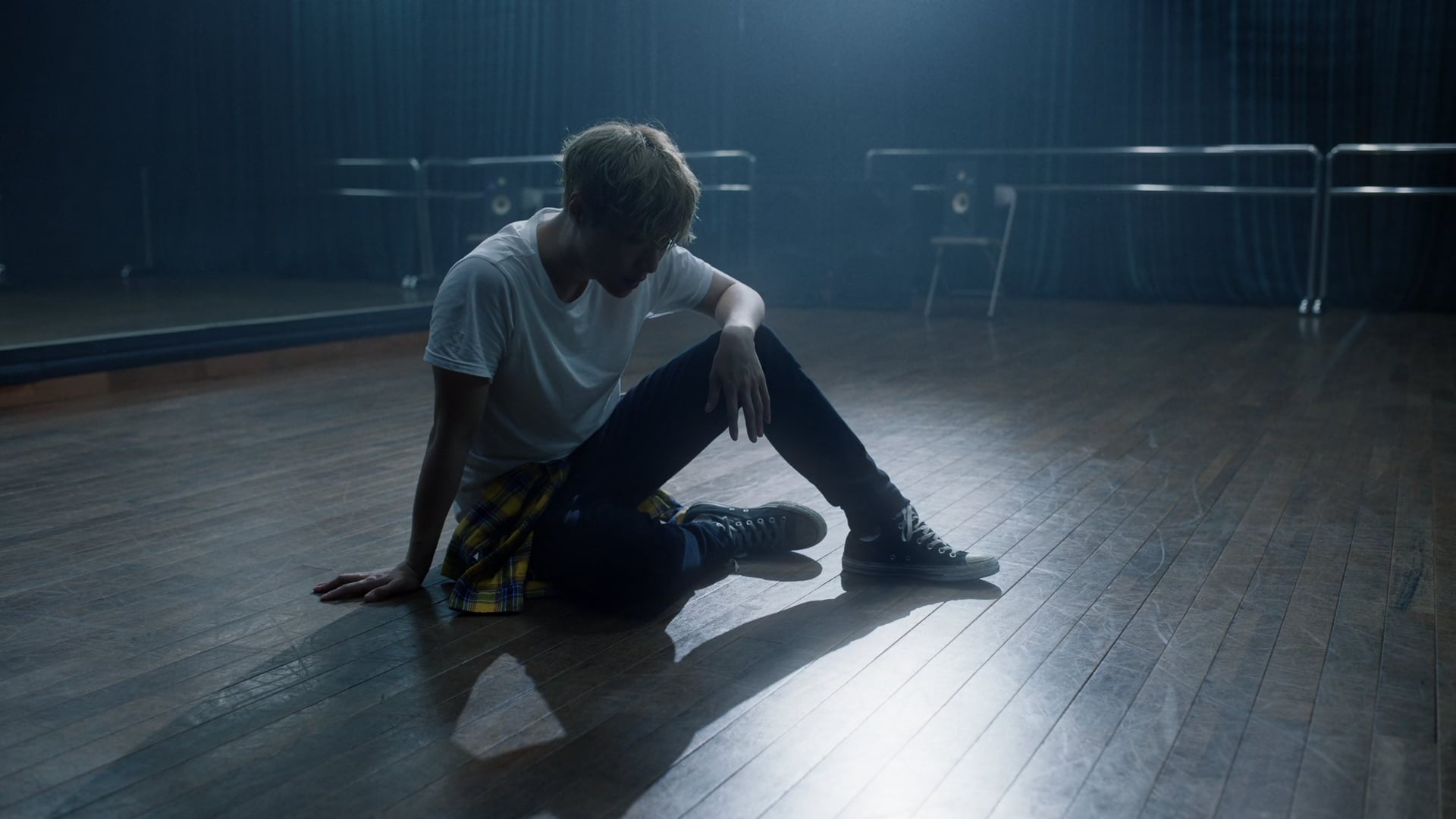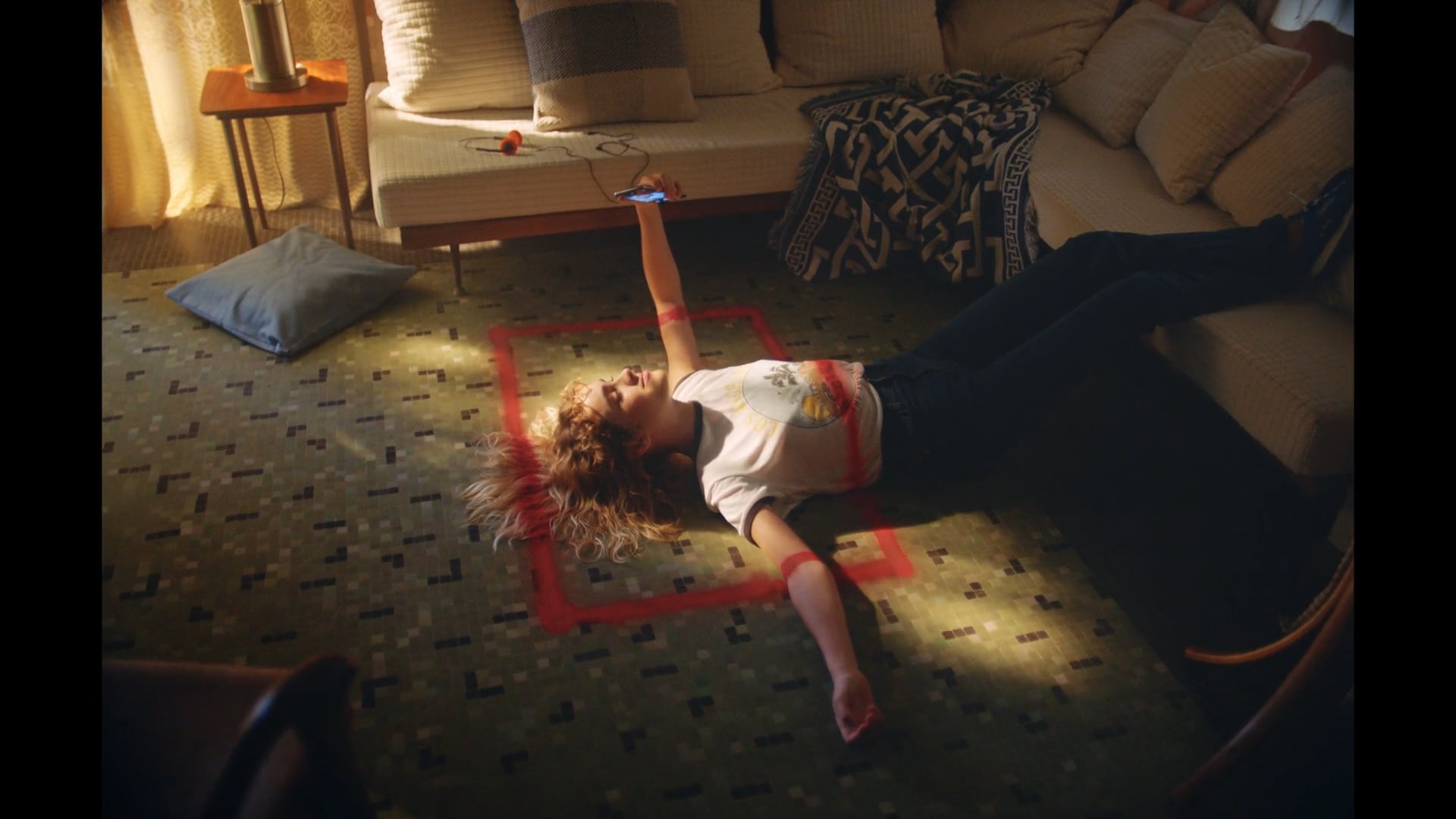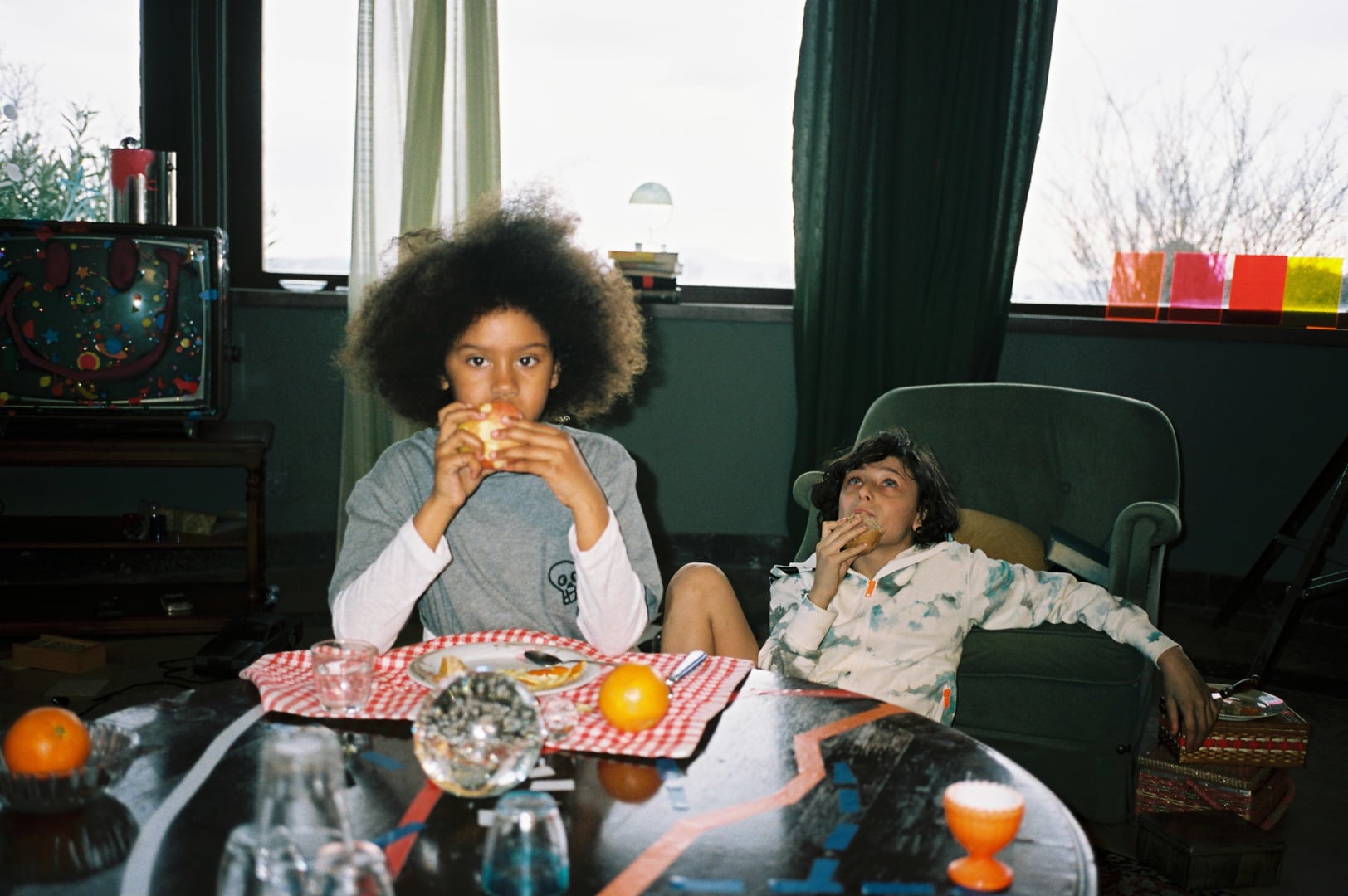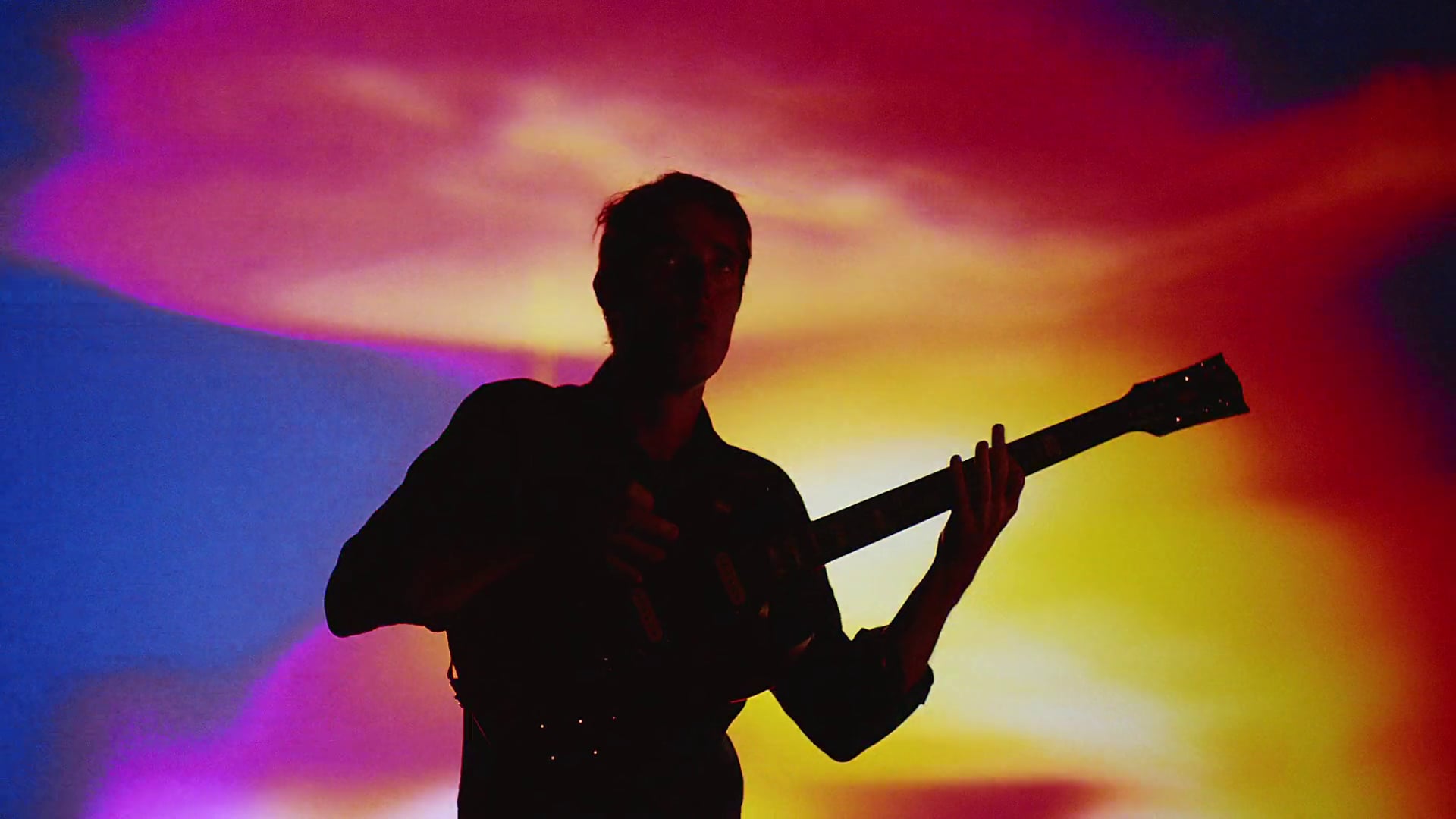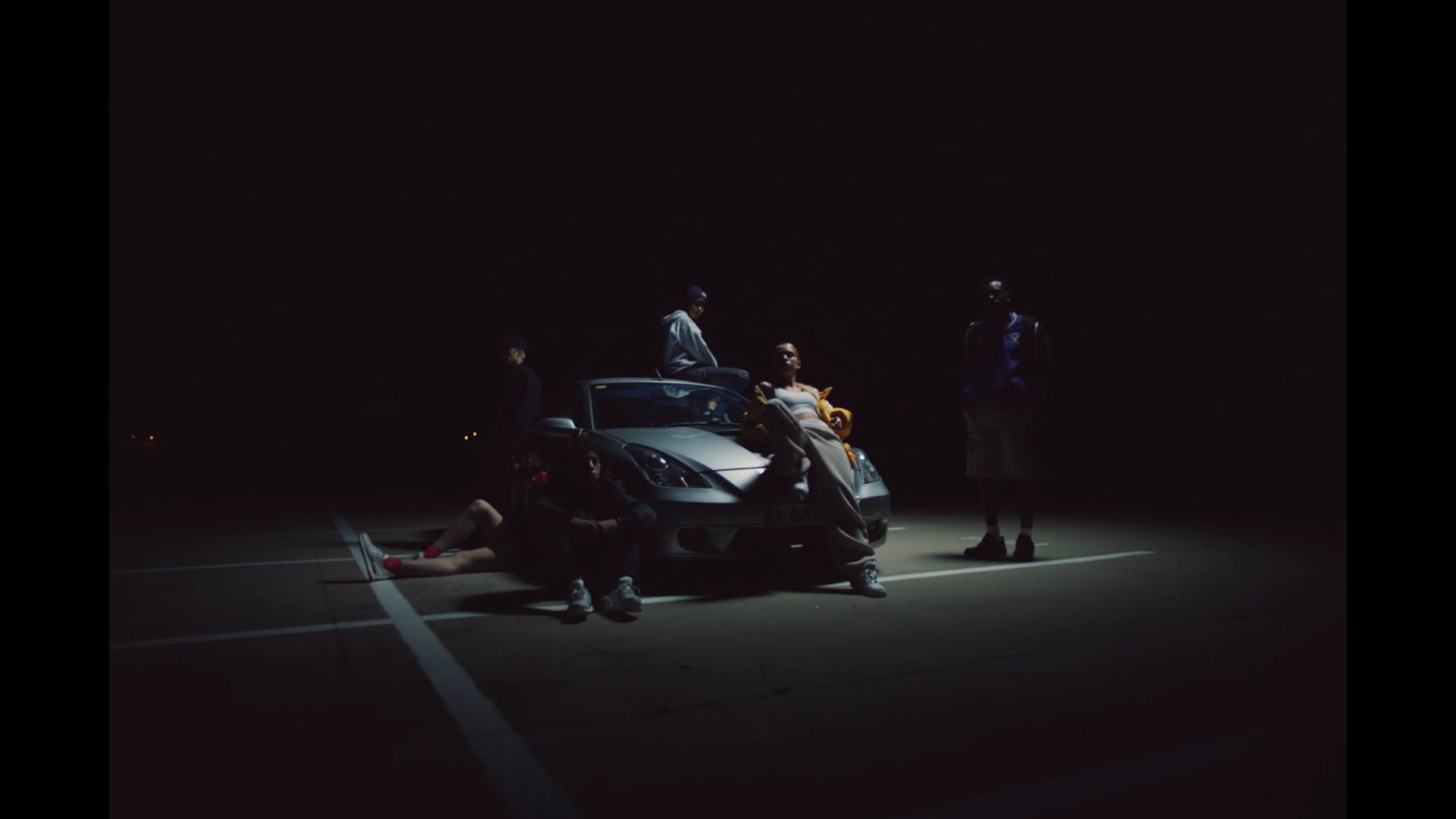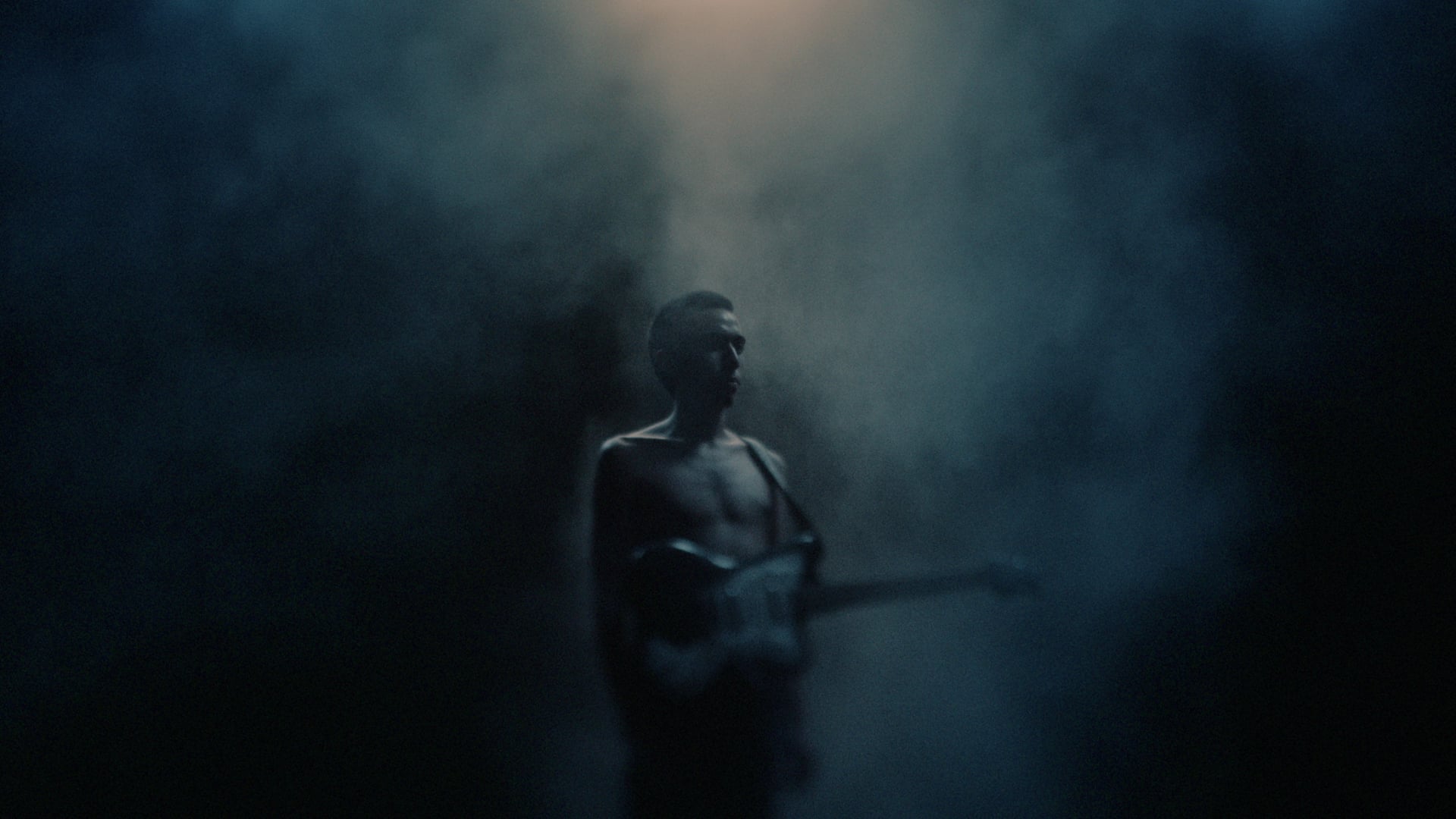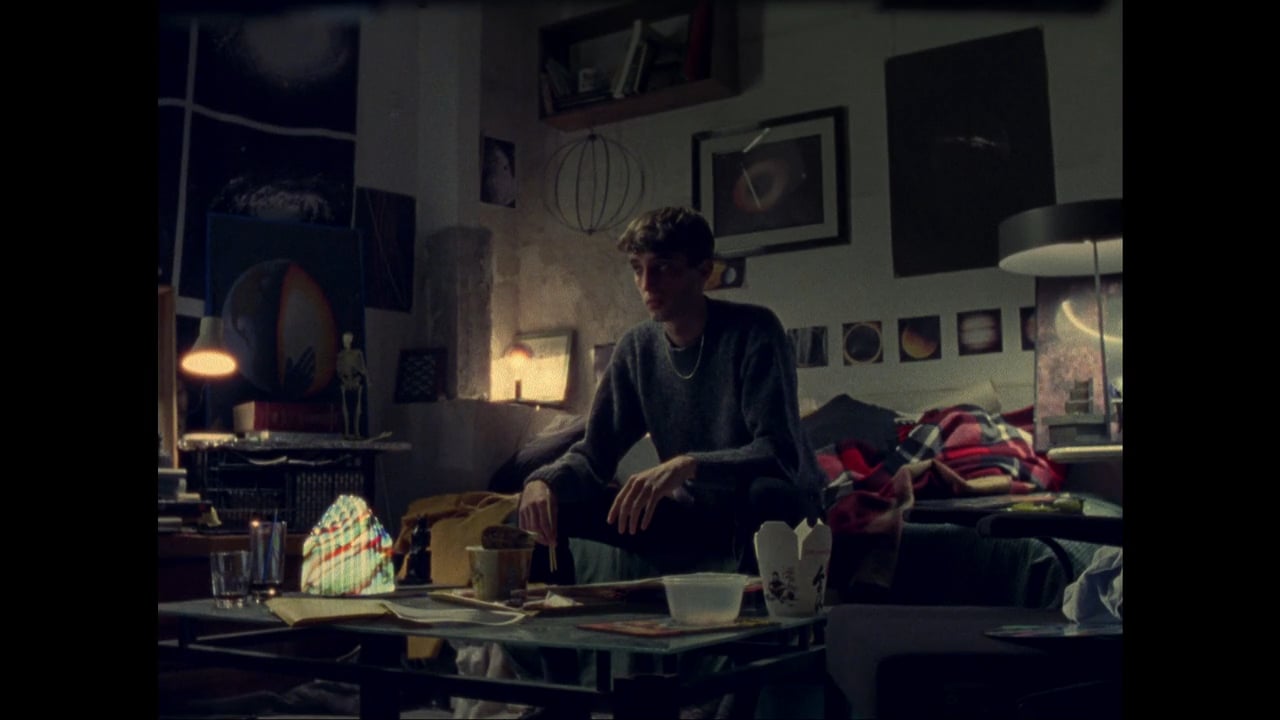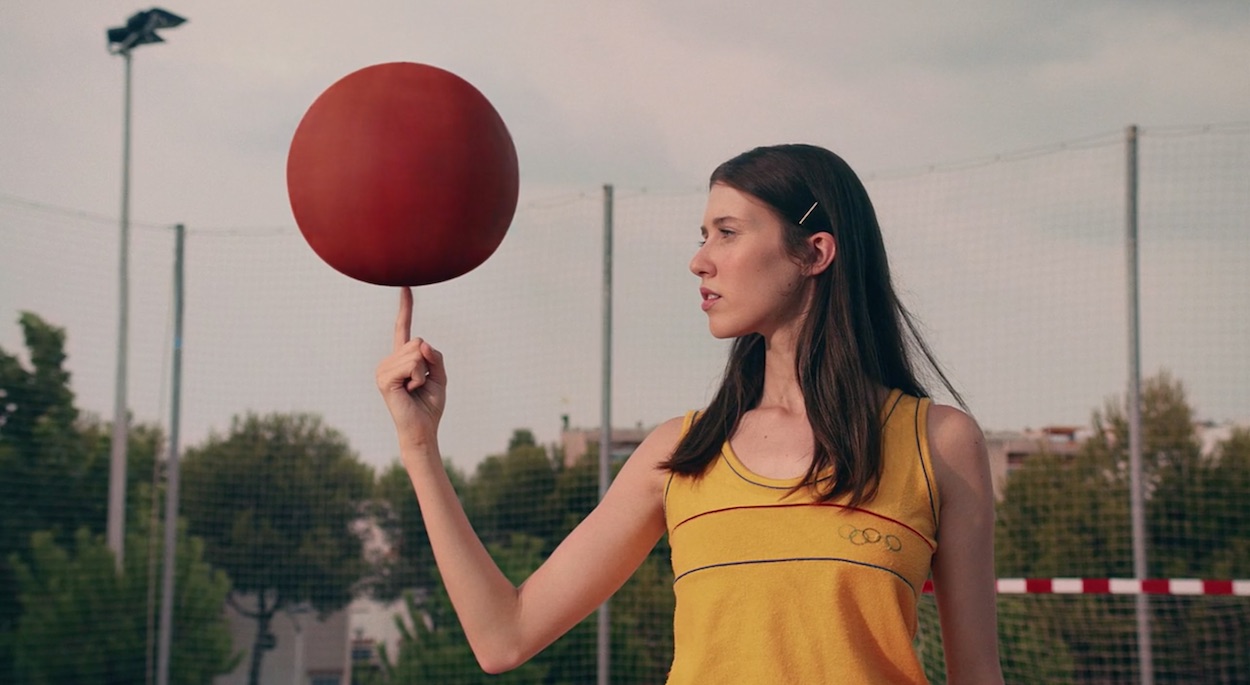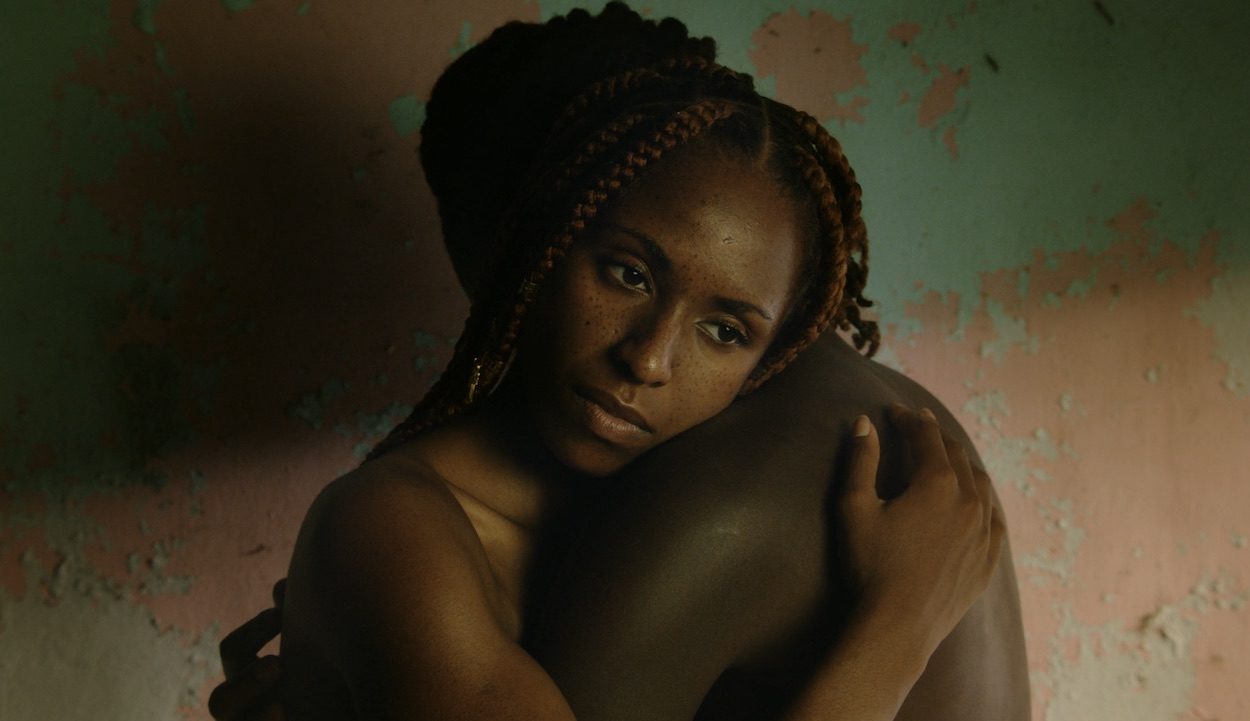1.4: The Yabba for Battles has got to be one of my favourite music videos.
Roger Guàrdia: Glad you like it. When I heard the track I really loved it, it wasn’t the conventional music video song. Literally, it was the opposite: a seven-minute instrumental track with lots of different parts but quite hypnotic with some repetitive structures at the same time. That kind of challenge to put images on that was what motivated me to jump into the project.
What triggered the concept?
I wanted to work with the idea of repetition as something that happens again and again. A never-ending cycle. I wanted to represent this with the circle as the perfect geometric shape and explore and express this in different ways: camera movements, characters, staging, etc.
For me, the song transmitted the idea of Order and Chaos at the same time. I loved these two opposite concepts, and somehow it’s something that surrounds us in our lives and in our nature and cosmos. This kind of harmony – entropy. A messy, complex universe but where everything works perfectly in a way.
So I started to plan this binomial way of thinking as well in some parts of the video, also using the circle as a geometric representation of a star. That’s why I used the band as a key element in the midst of that mayhem acting as a gravitational force. And the crowd turning around them, literally as if they were orbiting around a sun.
Like most of your work, if you saw it written down, it could sound really dull. But you elevate everything into something else. You make it your own with your own film language. Have you always experimented with techniques?
Sure! I love experimenting with every project and try to represent my vision and hopefully put my “stamp” there. I like to have a strong concept but then trying to explore the boundaries of that.
I didn’t go to a film school. I studied in the Uni something more like “media” which was a mix of different things. We had a subject that was experimental cinema, it was more like how artists were approaching cinema… Peter Kubelka, Stan Brakhage, Chris Marker, etc.
I tried to experiment and play from my first projects, surrounding bands of friends of mine with lighting them with just back projections. And creating the projections by myself painting transparent paper and putting these in front of the lenses. Or playing with the lights and a 16mm camera doing double exposures etc with the DoP. I like to play around with the narrative and also with the textures and the image/film itself.
It’s always a collaboration?
Yeah it’s always a collaboration with the DoP and the crew. I used to edit my own work in the beginning. But now I work hand to hand with editors, sound designers or post-production people too. From the idea, we play around…
CANADA is very collaborative, isn’t it?
Yes, there’re a crew of collaborative people to work with that try to help you to produce your vision of the film.
With a lot of music videos you feel the performance is shoehorned into the narrative with no real connection. But your techniques integrate the performance into the video.
Yeah and it’s kind of playing with it and experimenting, and being creative with how you show the performance rather than seeing it as a limitation…
Telephone for Zephyr Bones is another example of this integration.
That was a super simple idea, super small video let’s say for a friend of mine and my brother’s record label called La Castanya (They realise records and do booking and management from some punk-rock, experimental and electronic artists as well). Usually, I like to hear the song and sometimes at the very beginning, the song transmits an idea to me, an image, a narrative or a technique that I want to explore.
If I feel that a performance could be the best way to portray that song or that band, I’m doing it. I’m not against one thing or the other, but I prefer if there’s a performance it should have a link somehow to the idea.
The film that I think is completely stand out, is Saturn is Not That Far Away for Stella McCartney. It’s brilliant on every level. What was the initial brief?
The brief was super open. They wanted to do a collaboration with creators and artists so the only brief was do something with kids for their kids’ collection. They really wanted someone to capture it without doing a look book.
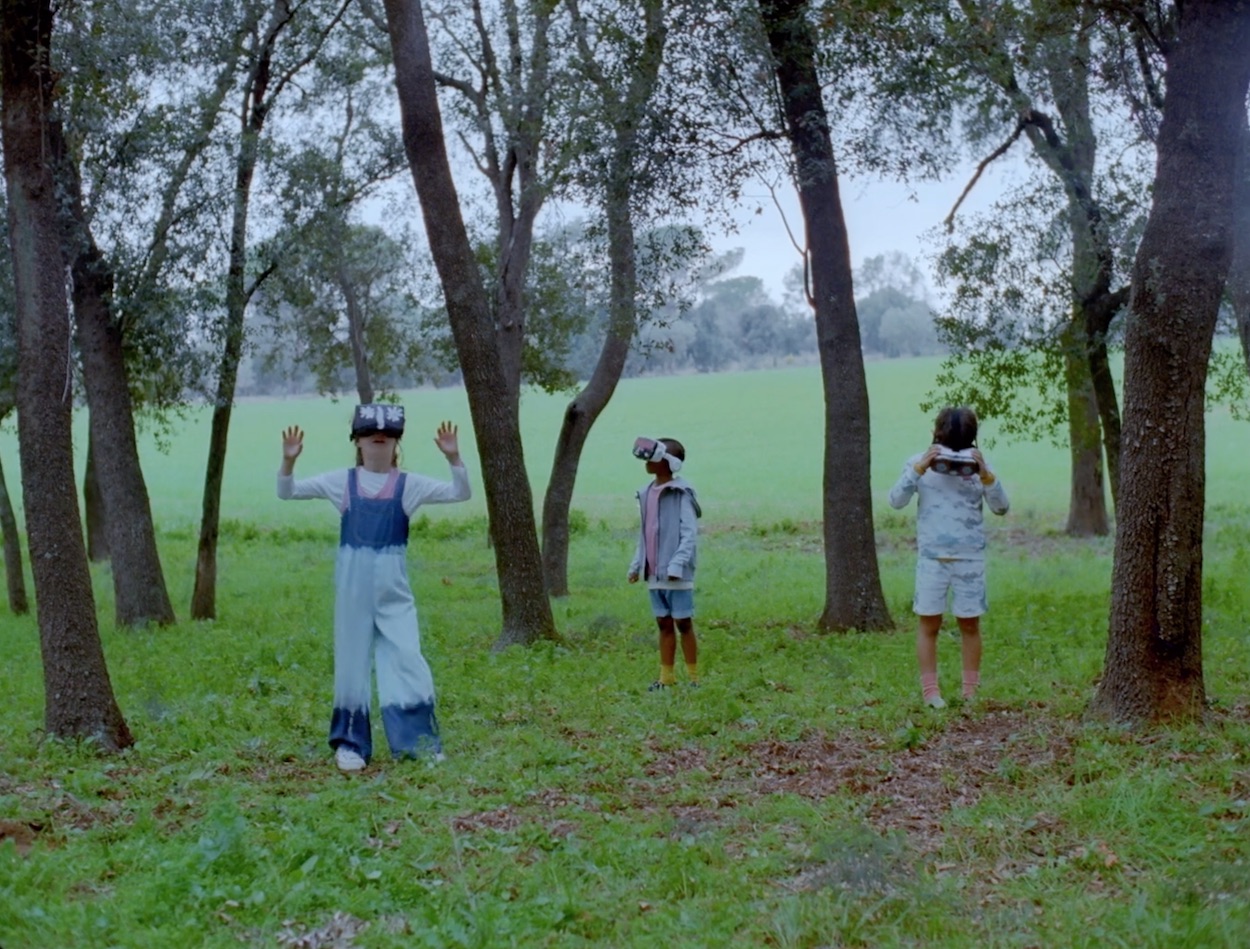 Child’s Play for Stella McCartney
Child’s Play for Stella McCartney
You wrote it as well? Any particular references?
As a reference, I had the diaries movies from Chris Marker, the book Lord of the Flies, a manga called Animatrix….there’s one chapter where kids are filled with superpowers. And for the music and sound design, I had different references from Tim Hecker to Yves Tumor.
I didn’t want to put the presence of adults there because … I remember when I was about five years old and I saw a blind person. And I remember trying to understand that. I wanted to transmit that kind of innocent feeling that you have when you are a kid and see and experience something for the first time.
A curiosity?
Curiosity and generosity.
And innocence.
Yeah, this mix of feelings and grace. That things are not black and white. I wanted to show how they embrace that difference. Adults say, ‘this is dangerous, you cannot do this, you cannot do that.’ That’s why I didn’t want to put adults there because the kids were having their own conclusions.
Tell me about writing it.
I wrote it by myself. I don’t have a strict rule. Not superconscious, but the dialogue creates a kind of song. I wanted just to write it as if I was in the head of a kid. And that’s why I wanted to overlap the sound. Because when you are thinking, I’m quite an over-thinker as well, your thoughts, your ideas are coming and going, overlapping on each other. Like you are thinking about this interview, then there’s another thought about what I’m going to eat tonight and who I’m going to meet later. So it’s a little bit like that.
It’s completely magic how it came together; the filming, the sound design, and the kids were really good. Was it an easy shoot?
I wouldn’t say that it was easy. Because we shot the whole thing in one day, and a couple of hours from the previous afternoon when the sun went down. But the effort was worth it and the kids were super into the whole thing.
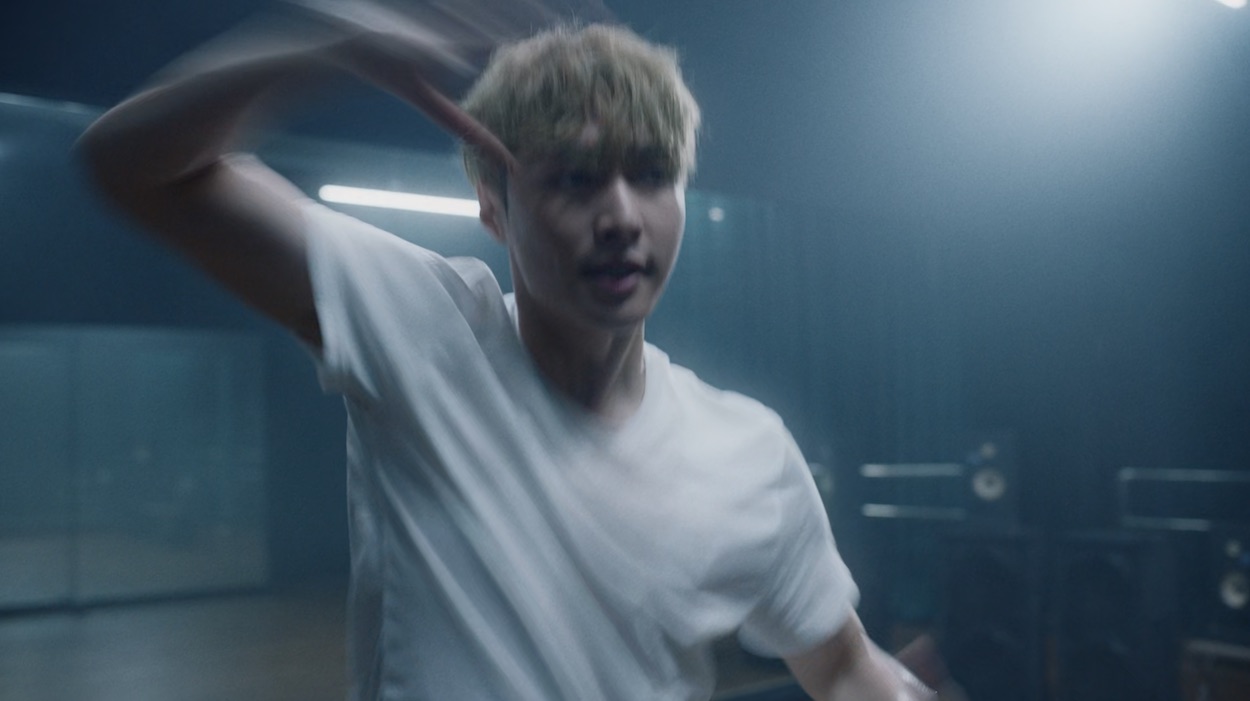 Converse, All the Stories are True
Converse, All the Stories are True
Did Converse come together in the edit? What’s your process for a commercial film like this?
I have quite a clear idea of what I want to do, which allows me to be a little bit more playful with the story-telling, rather than shooting lots documentary-style.
Maybe I can fake that it feels quite natural. But I think about everything, or at least the bits that I want to emphasise, and the kind of shots that I want to do. For example, in the Converse, the guy getting in and getting out of the frame is something I decided to do previously… that I would put the camera there… But then there’s maybe another shot that you find of that moment. And in the edit, you play it in a different way than you thought. So it’s a mix of both.
What do you do when you don’t have an idea? Does it become really laborious trying to work something out?
Most of the time you have an idea, but sometimes you are not happy enough with that idea, so you prefer to skip it. But I’m trying to build scenarios to help myself during the process. Music helps me a lot. I listen to a lot of music that inspires me for that project and this allows me to get into a mind of a mantra state of mind with the concept. Also, I go for a walk around the city, or do simple daily stuff.
Do you storyboard before a shoot? Or do you keep it fluid?
No, for Stella and Converse, I didn’t draw storyboards. I just wrote down the shots, like the technical script because I didn’t constrain myself. But obviously storyboards are helpful to show to the team, or an agency, what you want to do. And to have everybody on the same page. But I usually have, if I can, several meetings with the DoP and talk about how I see this, how I see that, and together we finish to shape things.
But for sure I always have the list of the shots that I want to do. Then I improvise some of the shots, or I see extra shots. For example, in the Nike Korea film that I have just shot, I drew a storyboard, and for Huawei too. But not for the music videos.
Roger Guàrdia is signed to CANADA
